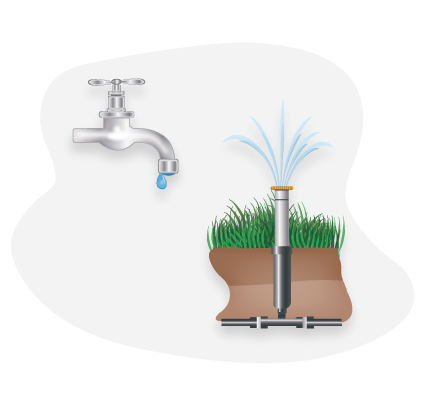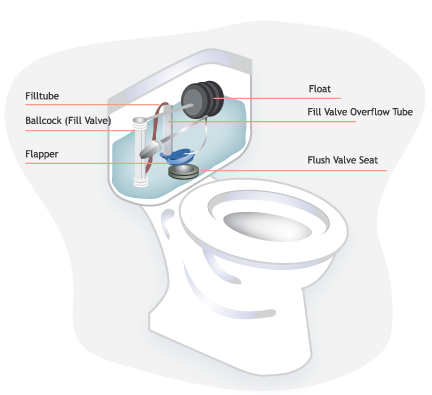High Water Bill Help
HIGH WATER BILLS & COMMON CAUSES
Receiving a high water bill without a clear reason can be frustrating. Several factors can contribute to increased water usage, and this page outlines some of the most common causes.
If you receive a bill that seems unusually high and can’t determine why, please contact our Customer Service team at (863) 763-9460 or email us at customerservice@ouafl.com. We’re here to help—whether it's reviewing your bill, discussing usage habits, or identifying potential issues. Our staff is committed to providing helpful guidance and resolving any concerns you may have.
Seasonal Usage
There is an annual spike in water consumption during the warmer months that may be attributed to an increase in outdoor watering and irrigating of lawns and gardens. Another factor is more outdoor water recreation, like filling pools or running the sprinklers for the kids to splash around in. For guidance on reading your meter, please visit our My Meter page.
Irrigation Habits
Even well-functioning irrigation systems can significantly increase your household water usage, which directly impacts your monthly bill. For example, a standard garden hose sprinkler can use about 1,020 gallons of water per hour. If it runs three times a week, that adds up to roughly 12,240 gallons per month.
Could you have a leak?
Please see below for possible leaks and ways to identify them.
Irrigation/Faucet Leaks

One common cause of a high water bill is a leak—often in a faucet or irrigation system. Even a small leak can waste up to 20 gallons of water per day, depending on its severity. Inspect each faucet for visible drips or leaks, and regularly check automated irrigation systems to ensure they’re working properly and free of leaks or broken sprinkler heads.

Could it be a leaky faucet or irrigation system?
To check for slow leaks, place an empty cup under the faucet and inspect it every few hours. Don’t forget to look under sinks for hidden leaks and inspect outdoor spigots as well.
Irrigation systems—both residential and commercial—are a frequent source of high water usage. During summer months, watering needs often double compared to winter. Regularly inspect your system for leaks, broken sprinkler heads, or stuck valves, which can waste large amounts of water. Also, ensure the irrigation timer is correctly programmed to avoid overwatering.
Toilet Leaks

A leaking toilet or a toilet that continues to run after being flushed is one of the most common household leaks. A leaky toilet caste a significant amount of water, potentially wasting hundred or even thousands of gallons per day depending on the severity of the leak. A small leak could waste 30 gallons per day, while a larger leak could up to 4,000 gallons daily. This can lead to a substatial in a family’s typical water use and bill. You should check for the most common leak: a deteriorated or defected flush valve (flapper) ball at the bottom of the toilet tank. If it does not make a tight seal, water will leak into the toilet bowl.

Is it a toilet leak?
To check for this:
- Take the lid off of the tank behind the bowl, flush the toilet, then wait for it to fully refill.
- Put 10 drops of food coloring or 1 colored dye tablet in the tank.
- Wait at least 30-40 minutes and do not flush the toilet.
- If there is any color in the toilet bowl after that time, there is a leak.
The second most common type of leak has to do with an improperly adjusted or broken Ballcock (Fill Valve). To check for this, take the lid off of the toilet tank, flush, and see if water is draining into the overflow tubes when the tank is full.
Water Leaks and Bill Adjustments
Water leaks—whether visible or hidden—can waste hundreds, even thousands, of gallons. That’s why it’s important to regularly inspect your plumbing, including faucets, toilets, outdoor taps, and irrigation lines, for any signs of leakage.
If you discover a leak on your property and receive a high water bill, you may be eligible for a billing adjustment on the sewer charge portion of the bill. For more details on the adjustment process, please contact us at customerservice@ouafl.com.
